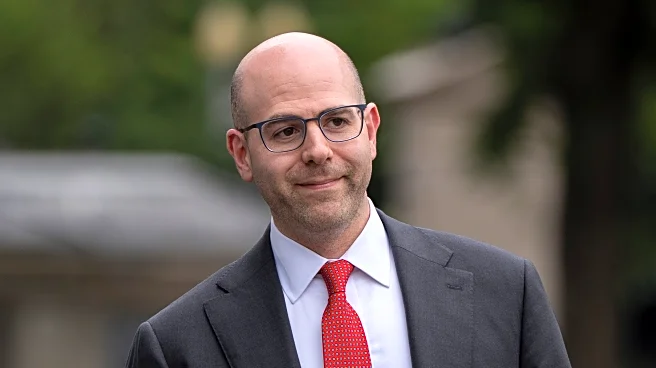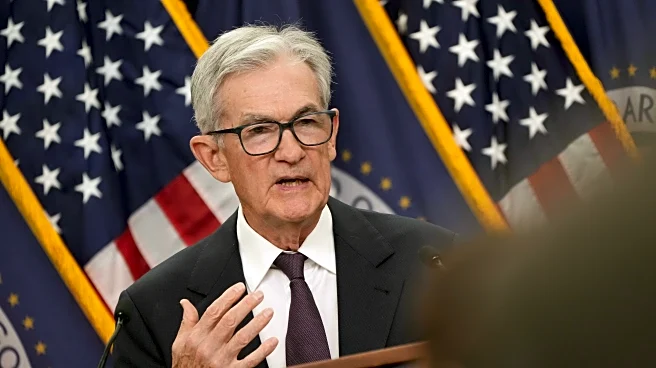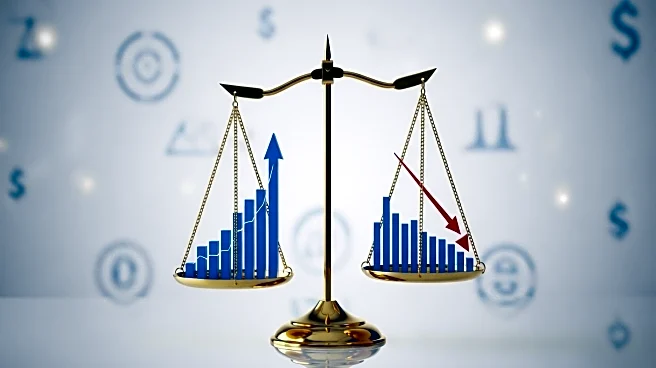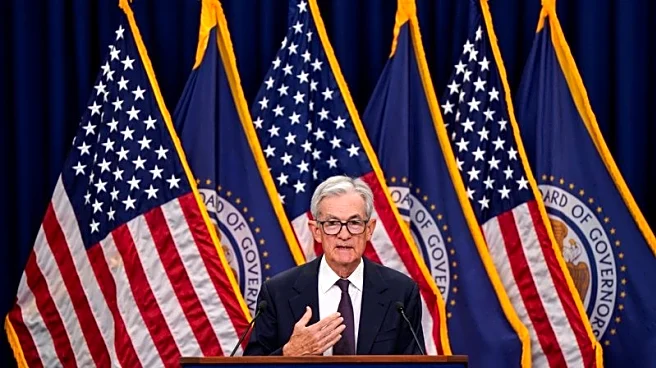What's Happening?
Federal Reserve Chair Jerome Powell announced a reduction in the central bank's key interest rate, citing a weakening labor market as the primary reason for the decision. The Federal Open Market Committee's first rate cut of the year comes amidst signs of declining supply and demand for workers, coupled with inflationary pressures from tariffs. Powell emphasized the need to balance the Fed's dual mandate of stable prices and low unemployment, acknowledging the challenging situation posed by two-sided risks. Despite the current conditions resembling stagflation, Powell expressed confidence in the Fed's policy path, suggesting further cuts could be considered if necessary.
Why It's Important?
The rate cut reflects the Federal Reserve's response to economic challenges, particularly the slowing labor market and inflation concerns. This decision impacts various stakeholders, including businesses and consumers, as interest rates influence borrowing costs and economic activity. Lower rates can stimulate economic growth by making loans more affordable, potentially benefiting sectors like housing and consumer spending. However, persistent inflation remains a concern, as it can erode purchasing power and affect long-term economic stability. The Fed's actions are closely watched by investors, with potential implications for stock markets and Treasury yields.
What's Next?
The Federal Reserve may consider additional rate cuts if economic conditions warrant further accommodation. Powell's comments suggest a readiness to adjust policy in response to evolving economic developments. Stakeholders, including businesses and policymakers, will monitor labor market trends and inflation data to gauge the Fed's future actions. The central bank's decisions will likely influence market expectations and economic forecasts, with potential impacts on investment strategies and fiscal policy discussions.
Beyond the Headlines
The current economic situation highlights the complexities of managing monetary policy in the face of stagflation-like conditions. The Fed's dual mandate requires careful balancing of inflation control and employment support, posing ethical and strategic challenges. Long-term implications may include shifts in policy frameworks and debates over the effectiveness of traditional monetary tools in addressing modern economic issues.












